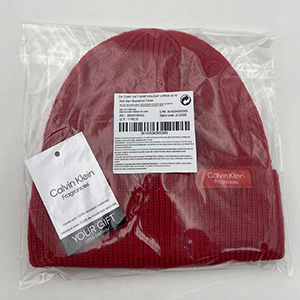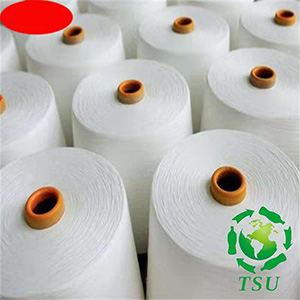1. Falt Embroidery
Flat embroidery refers to a technique of stitching in which the design is applied directly on the surface of the sweaters. It involves the use of a single layer of thread that is stitched onto the fabric to create a two-dimensional image. This type of embroidery is commonly done on christmas sweaters, hats, shirts, or other garments using a computerized embroidery machine or by hand.
The embroidery machine punctures the fabric with a needle, and the thread is then inserted into the fabric from the underside. Each stitch is carefully formed to create a smooth, even surface, resulting in a design that looks like it is painted on the fabric. This technique is ideal for creating logos or text on clothing or accessories, as it allows for precise detailing and accurate color reproduction.
Flat embroidery can be done using a wide range of materials, including polyester, rayon, and metallic threads. It can also be used to create a variety of textures, patterns, and styles, adding depth and dimension to any design. Flat embroidery is a popular choice for customizing uniforms, hats, bags, and other items, as it is cost-effective, quick, and easy to apply, while being durable and long-lasting.

2. Sequin Embroidery
Sequin embroidery is a technique of stitching that involves sewing sequins onto a fabric to form a design. It is a popular form of embellishment in the fashion industry and is commonly used on clothing, accessories, and home decor items. Sequin embroidery can be done with a variety of sequin shapes, sizes, and colors, and can be combined with other embroidery techniques to create intricate designs that dazzle and sparkle.
To create sequin embroidery, a design is selected and traced onto a fabric. A needle and thread are then used to stitch sequins onto the fabric within the design lines. Sequins may be attached using a variety of stitches such as a backstitch or satin stitch, depending on the desired effect.
Sequin embroidery can be done by hand or using a computerized embroidery machine. Computerized machines are able to program complex patterns and designs, making it easy to create custom designs quickly and accurately. The sequins are typically attached to a piece of backing material such as felt or interfacing, which is then attached to the fabric to provide stability.
Sequin embroidery can add a glamorous touch to any garment or accessory, and is often used on evening wear, dance costumes, sequin christmas sweater, and bridal gowns. It is a versatile technique that can be used to create bold , statement pieces or subtle accents. Due to its glamorous nature, sequin embroidery is also commonly used in costume design, theater productions, and fashion shows. With endless possibilities for customization, sequin embroidery is a fun and creative way to make any item truly unique.

3. Non-woven Patch Embroidery
Non-woven patch embroidery is a technique that involves creating embroidered patches from non-woven materials, such as felt or polyester. Non-woven materials are synthetic fabrics made from fibers that are bonded together by heat, pressure, or chemicals, rather than by weaving or knitting, which makes them strong and durable.
To create a non-woven patch, a design is first created and digitized using embroidery software. The design is then sent to an embroidery machine, which stitches the design onto a piece of non-woven fabric. The excess fabric around the design is then trimmed, leaving a patch with clean, finished edges.
Non-woven patch embroidery can be done in a range of sizes, shapes, and colors, making it easy to create customized patches that are perfect for a variety of applications. Patches can be sewn or heat-sealed onto garments, bags, hats, and other items to add personalization and branding.
Non-woven patches are often used for christmas clothing, sports teams, clubs, and organizations as a way to display team logos or emblems. They are also commonly used for military, police, and firefighter uniforms to display rank and identification. Non-woven patches are durable and long-lasting, making them a great option for items that will be exposed to frequent wear and tear.

4. Patch Embroidery
Patch embroidery is a technique that involves creating an embroidered patch, which can then be sewn onto an item of clothing, bag, hat, or other accessory as a form of decoration or branding. The embroidered patch is first created using a digitized design, which is loaded onto an embroidery machine. The machine then stitches the design onto a piece of fabric, which is usually a durable material such as twill, felt, or polyester.
The edges of the patch are then trimmed, and any excess fabric is removed to create a finished patch. The patch can be further customized by adding additional embroidery, such as lettering or outlining, and by choosing different thread colors to match the design.
Embroidered patches are versatile and can be used for a variety of purposes, such as displaying team logos, military emblems, or company branding. They are often used by sports teams, schools, clubs, and organizations, as well as by businesses looking to promote their brand or logo.
Patches can be sewn onto items using a sewing machine or by hand, and can be attached permanently or temporarily using hook-and-loop fasteners, such as Velcro. Because patches can be easily attached and removed, they are a popular form of decoration for uniforms or clothing that needs to be regularly cleaned or replaced.
Patch embroidery is a timeless technique that has been popular for many years and continues to be a popular choice for customization and branding of a wide range of items. It provides a durable, long-lasting form of decoration that can easily be customized to meet individual needs and preferences.

5. Towel Embroidery
Towel embroidery is a technique that involves adding embroidery designs to a towel. It is a popular way to personalize towels, whether for personal or commercial use. Towel embroidery can be done using various fabrics, including terry cloth, waffle weave, and linen. Embroidery designs can range from simple monograms to more complex patterns with multiple colors.
To create a towel embroidery, the design is first digitized using embroidery software. The digitized design is then transferred to an embroidery machine, which does the stitching automatically. The embroidery machine uses multiple needles to stitch the design onto the towel using various types of stitches and thread colors.
Towel embroidery can be done using a variety of stitching techniques, including satin stitch, running stitch, and chain stitch, among others. Towel embroidery can also be done using various embellishments, such as ribbon or sequins, to add additional flair to the design.
Towel embroidery can be used for various purposes, including gift giving-christmas tree skirt, promotions, or decoration. Many businesses use towel embroidery as an effective marketing tool by featuring their logos or designs on towels to promote their brand.
Overall, towel embroidery is a versatile and practical way to personalize towels, making them unique and customized. It also adds a touch of elegance and sophistication to towels, making them perfect for gifts or special occasions.






